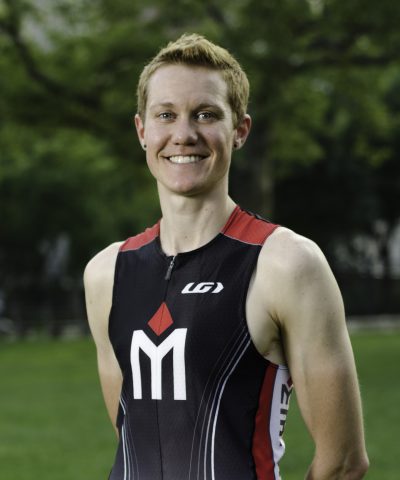These days, if you can run, you can raise funds. Every weekend, it seems, there are road races to cure breast cancer, build schools in impoverished African villages, and do just about every other good deed imaginable. Fundraising races are often impressive affairs, complete with corporate sponsors, water stations and gushing publicity.
When Chris Mosier decided to run to raise money, though, he did it alone. The decision seemed apt. He was running to support homeless LGBT teenagers, and few populations are as lonely as that.
Chris’s run earlier this month—35.6 miles, a loop around the entire perimeter of Manhattan—benefited the Ali Forney Center in New York City. A shelter and drop-in center offering food, showers, clothing, medical care and mental health and substance abuse services to thousands of LGBTQ young people annually, it was destroyed by Hurricane Sandy. Flood waters from the Hudson River demolished thousands of dollars’ worth of computers, office equipment, refrigerators and food at its drop-in center.
Chris was never homeless himself. But the plight of teenagers cast out of their families—then left to battle for survival, at the same time trying to figure out who they are and where they fit into the world—resonated deeply.
As a girl growing up near Chicago, she played team sports. She always knew on some level she did not fit society’s expectations of gender, but she did not have the vocabulary to express what she felt.
Even in college, Chris says, “I didn’t know about the LGBT community. I was oblivious to it, and to any kind of self-awareness.”
About 10 years ago though, Chris finally met some transgender people. Gradually, that self-awareness grew.
Chris moved to New York and began a career in higher education. Chris identified as “queer,” and played on men’s softball teams.
But Chris also ran and bicycled on teams and in events as a female. “I delayed my transition because of sports,” Chris says. “I did well as a woman, and wondered how competing as a man would affect things. I wear Spandex. I’m in very body-conscious sports. Being an athlete was an important part of my identity, and I had a lot of questions.”
Those worries proved groundless. Chris was accepted quickly during and after his transition. He’s spent the last five years competing in road races and triathlons, and serves as a coach and ambassador for the Empire Triathlon Club and Team Aquaphor.
Like many members of New York’s LGBT community, Chris had heard of the Ali Forney Center. As he learned of its devastation during the hurricane, and saw more destruction while running in local parks, Chris vowed to help.
As vital as its work is, Ali Forney is only a drop in the bucket. There are an estimated 3,800 homeless youth in New York, Chris says. Forty percent are LGBT. The center provides only 250 beds. Still, it’s something.
“I don’t have the money to get Ali Forney back on its feet myself. But I could raise a little bit,” Chris says. “And if I raised awareness, too, that might lead to something.”
He chose December 1 as his run date and spent three weeks spreading the word via social media. Donors could contribute any amount; suggestions included $32 (a dollar for every mile he figured he’d run), $50 (a dollar for every kilometer), or whatever else anyone wanted. He also gathered prizes to raffle off to contributors.
Chris started and finished at the United Nations. And he started and finished alone.
“A lot of teammates and friends offered to join,” he notes. “But it was important for me to do this by myself.”
He wore no headphones; he just ran, and reflected. At one point he stopped at the Staten Island Ferry Terminal to warm his hands. “I realized, if I was homeless I couldn’t just do that,” he says. “I’d have to really think about things, like where I could use the bathroom.” He carried a bit of food, but dropped some along the way. “If I was homeless, losing that food would have meant a lot more.”
Chris’ run took five hours and 18 minutes. He felt pretty good until Mile 25. At Mile 30, he really started to feel the effects. But, like homeless youth with no other options, he kept going. When it was over, he had an hour to shower, dress and get to work.
The Ali Forney Center had no idea who Chris was. They still might not. That’s not the point, he says. “This isn’t about me. It’s about getting the word out, and helping an organization that helps kids who need help.”
Chris continues to accept donations via aliforneycenter.org. Search there for “Mosier” and give what you can. –Dan Woog
Dan Woog is a journalist, educator, soccer coach and gay activist. His latest book is We Kick Balls: True Stories from the Youth Soccer Wars.


What Do You Think?